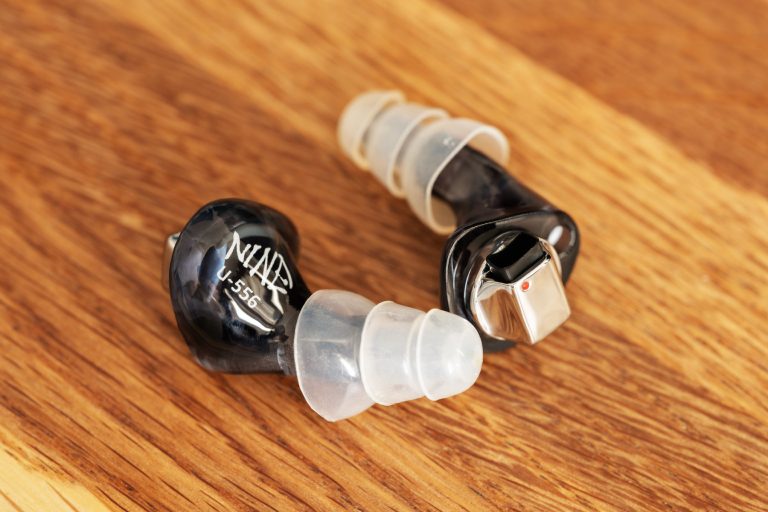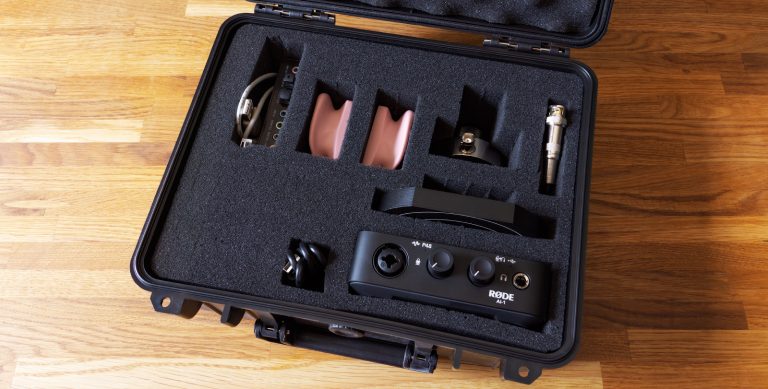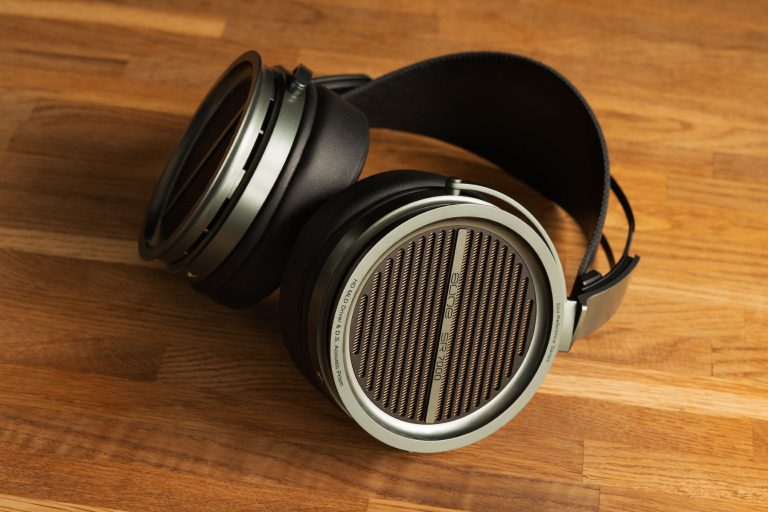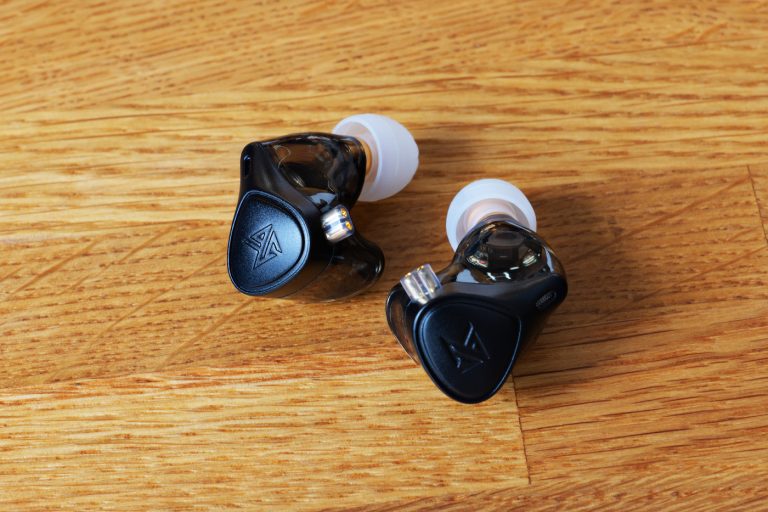EPZ P50 Earphones Review
I know the EPZ company only by a single, but extremely successful earphone model, EPZ G10. It’s those ‘earphones with a flashlight included’. P50 is a completely different story both technologically and in terms of the price/self-presentation. This is a bid for ‘real’ sound for a little less than $200.
And that’s what we’ll talk about today.
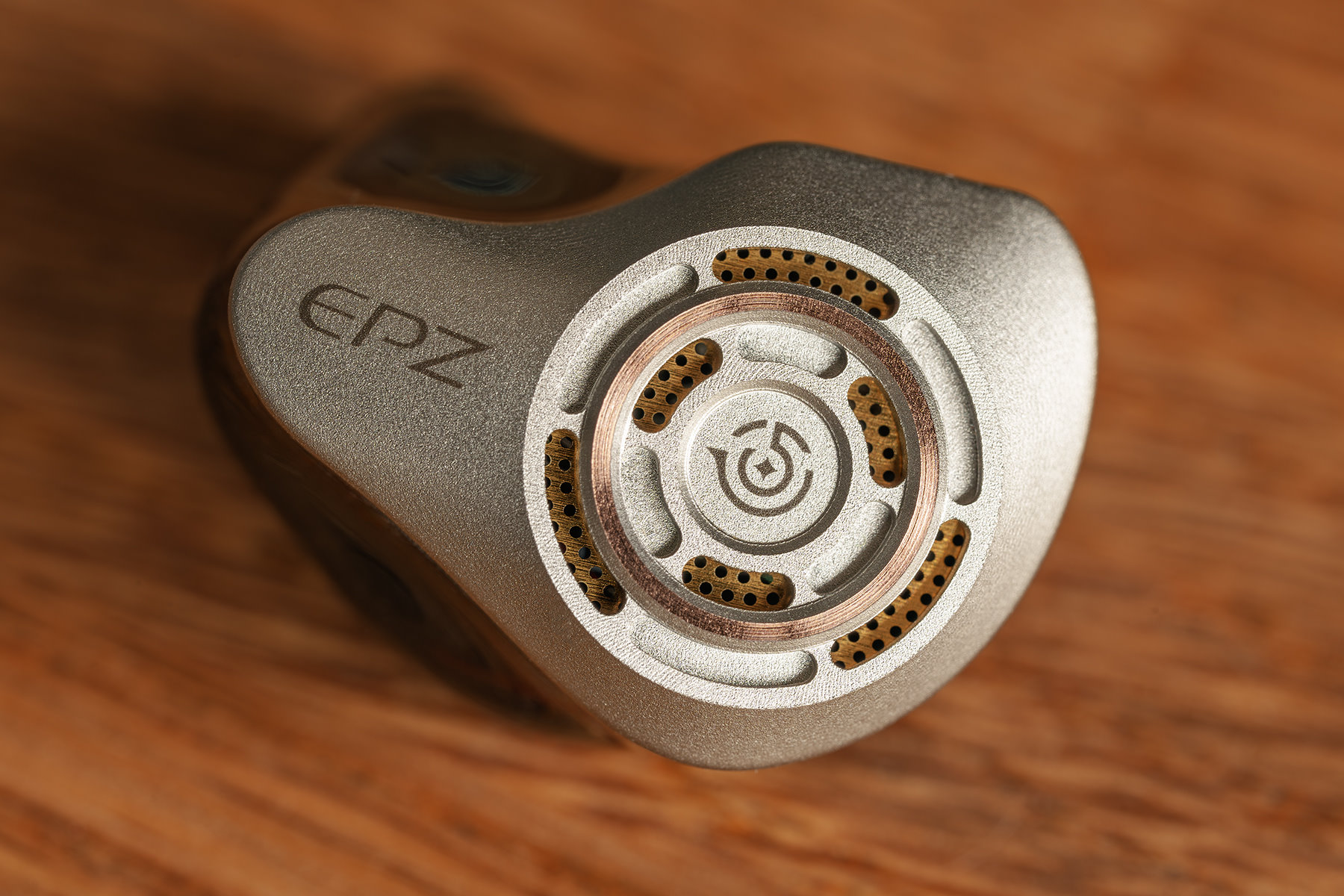
All but the sound
The earphones come in a beautiful box made of thick textured cardboard.
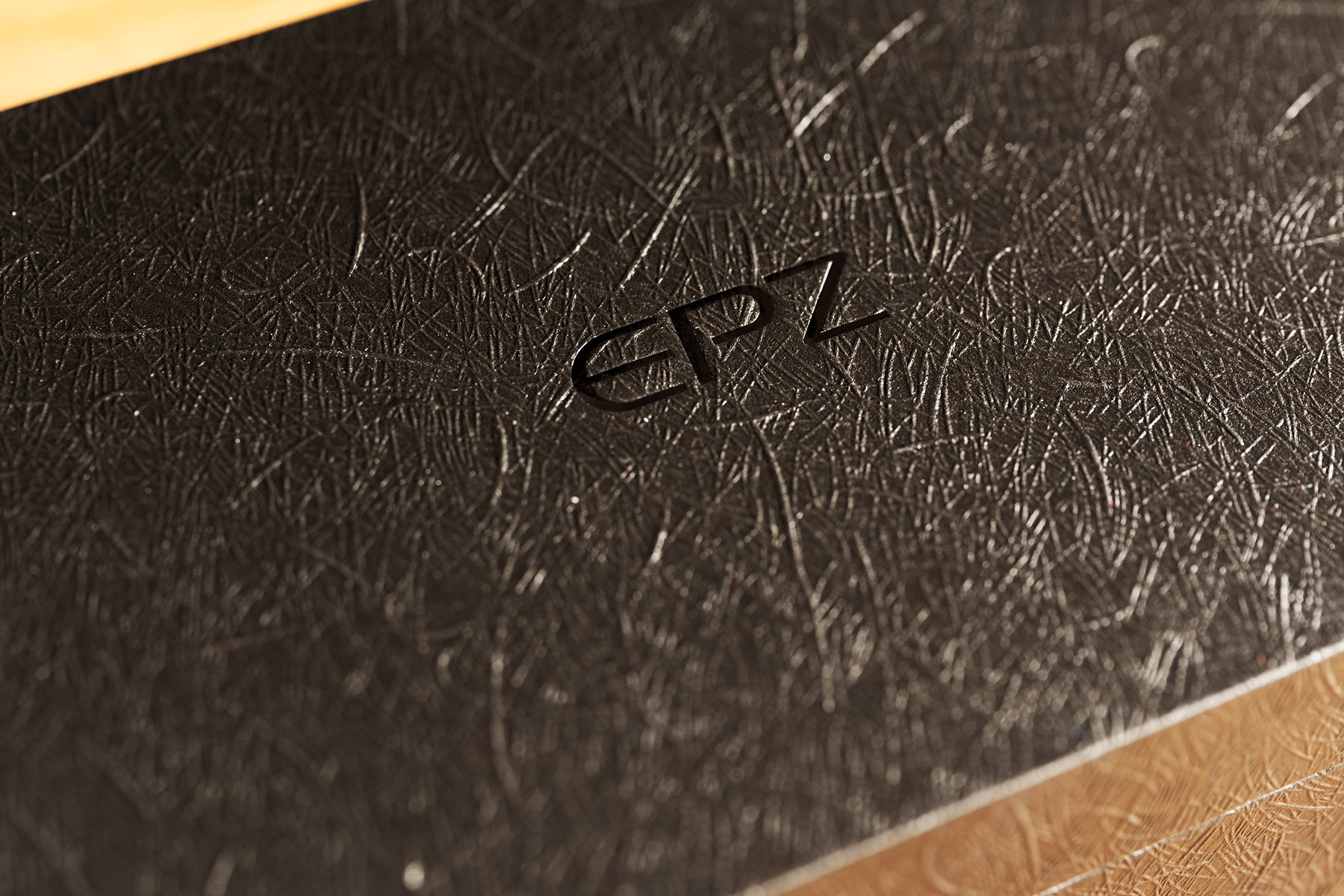
According to the latest fashion, the contents of the box are covered with a thin, parchment-like sheet, which makes it feel like opening a box of chocolates.
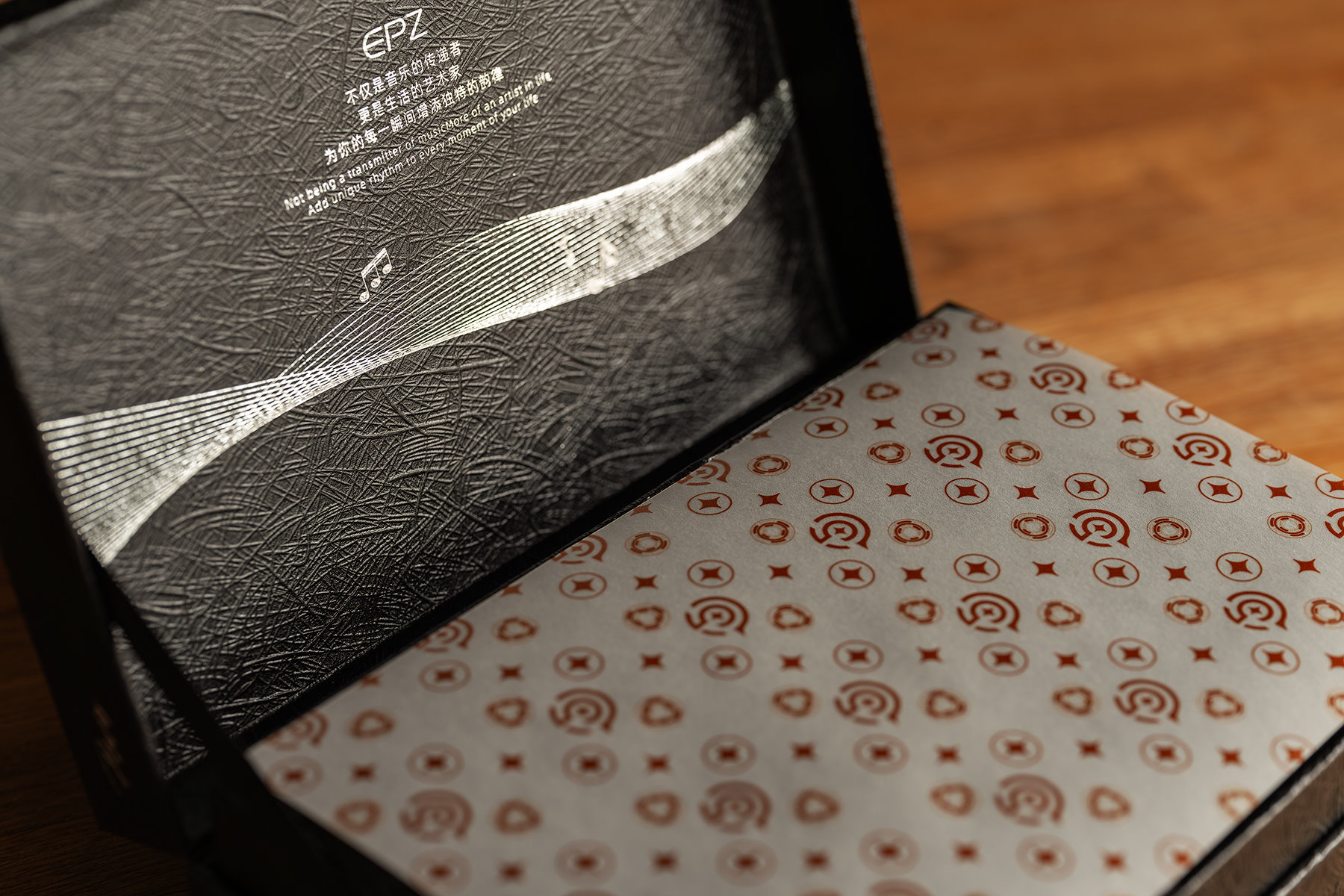
The sheet is needed to increase the degree of fanfare, as well as to protect the earphone enclosures from scratches during transportation. As the example of PULA Anvil114 shows, it doesn’t help to protect the enclosures in any way. However, P50 have metal backplates, so they can scratch whatever themselves.
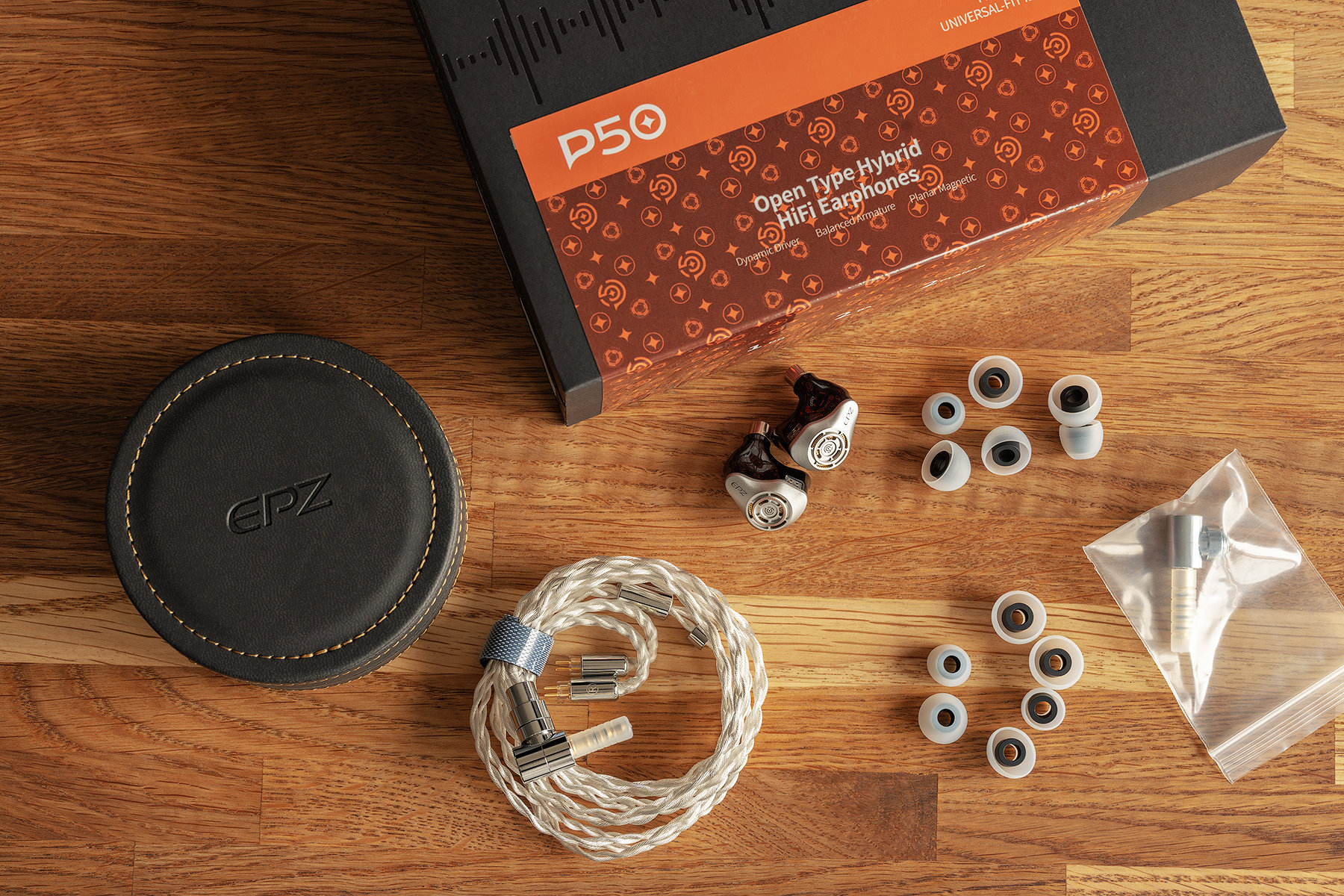
The set is as follows:
- the earphones;
- the cable;
- the case;
- 2 sets of eartips;
- a microfiber cloth.
There are no further questions, it’s made properly.
The cable has replaceable connectors – 3.5 and 4.4 mm.
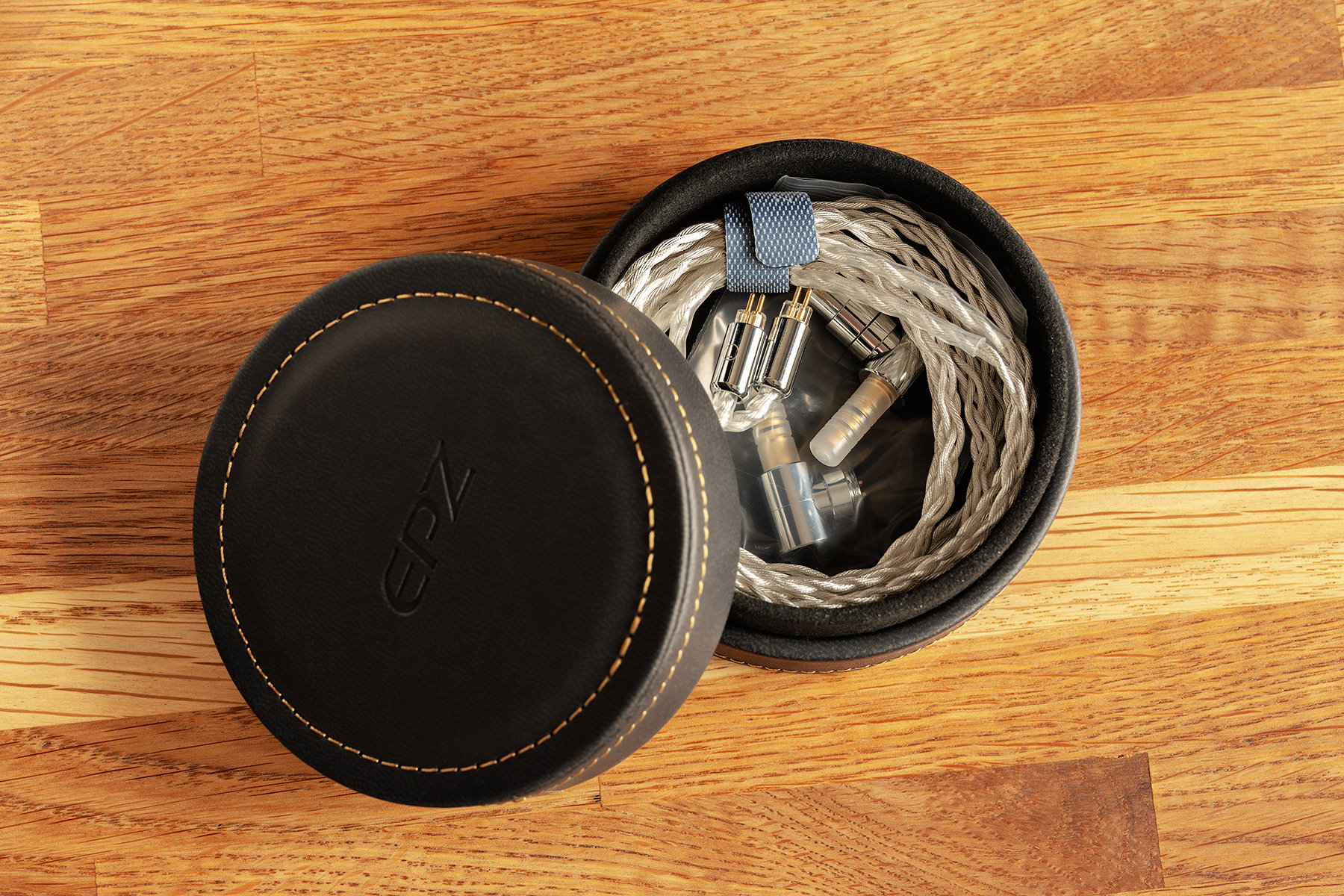
The connector is attached to the cable with a threaded ring. The ring is polished, absolutely smooth, you can’t really grasp it with your fingers. The threads are done frankly poorly. It’s not convenient to change the connectors, and doing it by the ring is simply scary – you have to squeeze it hard when twisting and untwisting. Well, at least, there are clear L and R markings. That’s a good start.
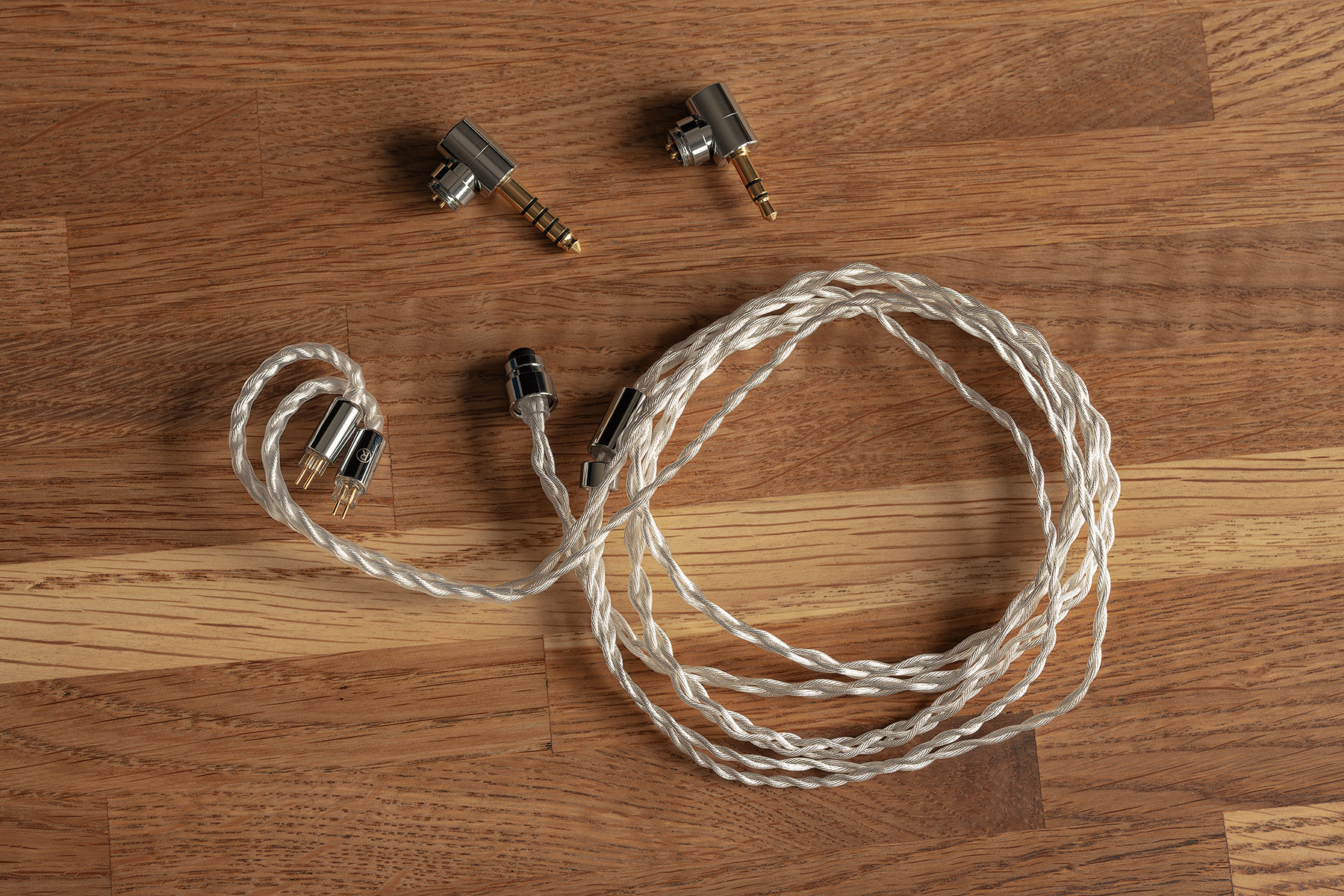
Therefore, I can describe the cable as decent, but the implementation of the connector change mechanism is just frankly poor.
The earphone enclosures are made of resin, the outer overlays are metal, as are the sound ducts. The diameter of the sound ducts along their entire length is 5.7 mm, and their length is 4.2 mm.
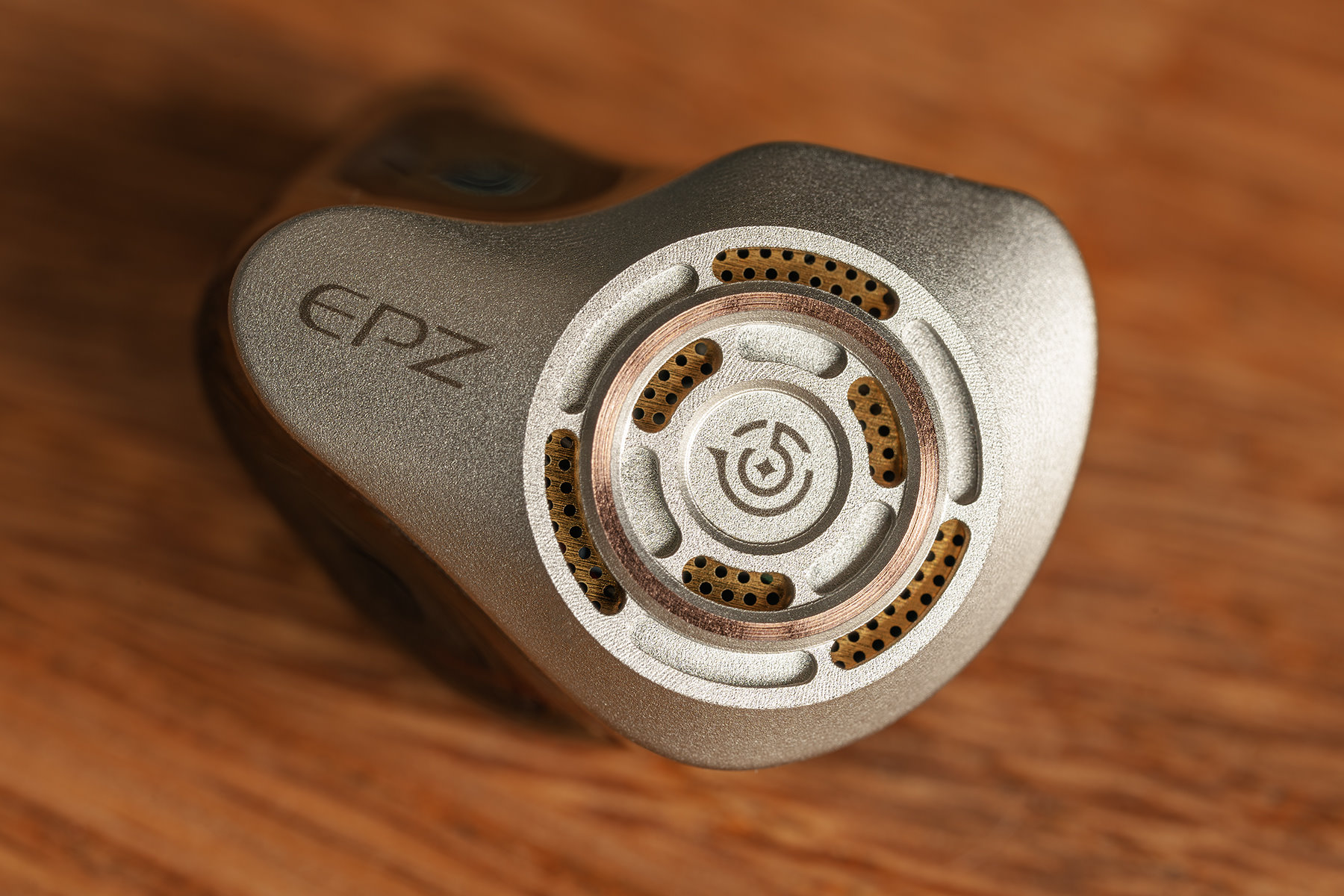
In terms of being opened or closed back, P50 are closed-back for an immediate listener, that is, they’re almost as soundproof as real closed-back models. But they work as semi-open for the outside world — some sound comes out from the other side. It’s not loud compared to what the user hears, but it will annoy particularly nervous colleagues at work, especially if the room is quiet.
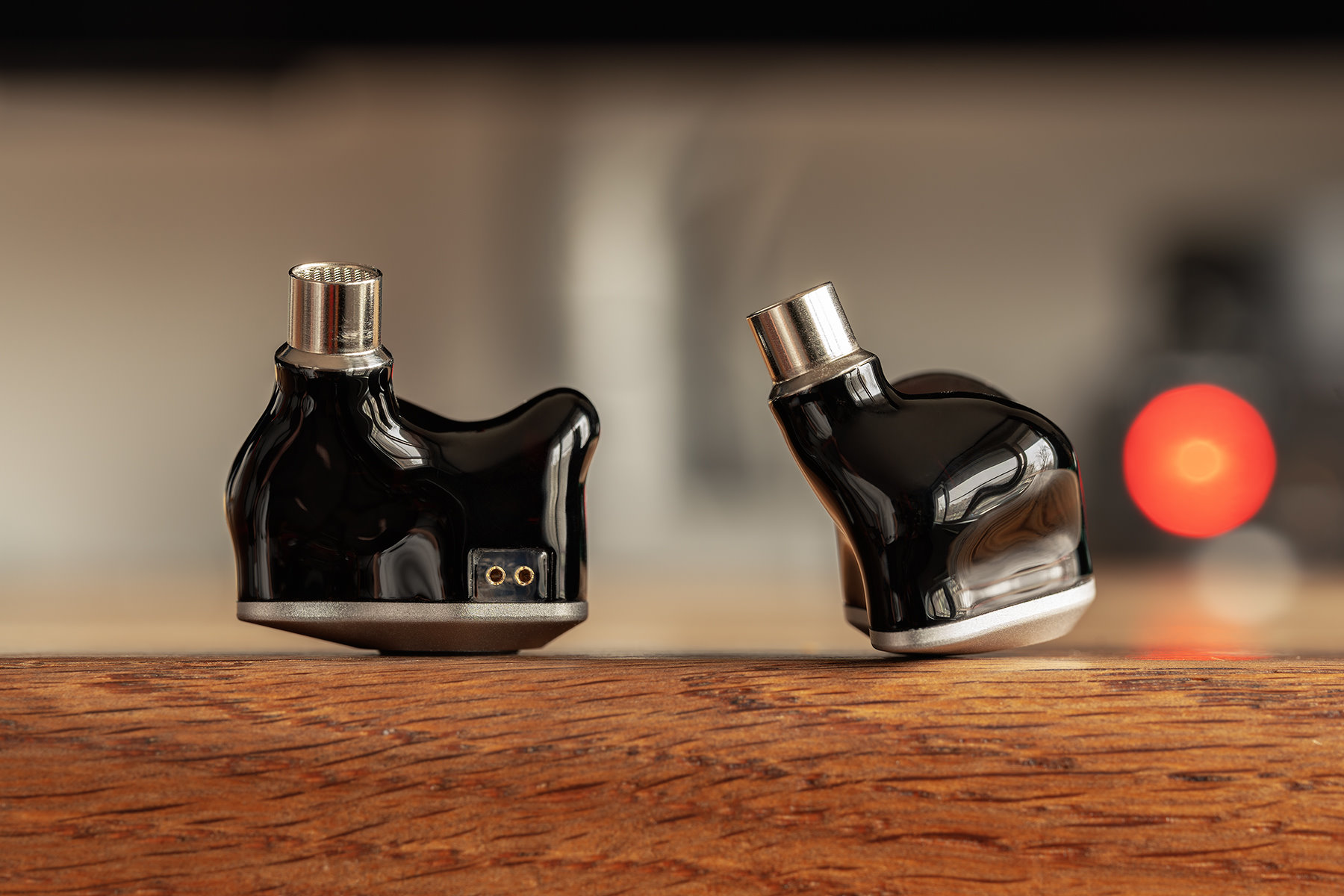
The enclosures are ergonomically shaped and fit into the ears perfectly. The connection area is flat, the cable doesn’t fall out.
The meshes are non-removable and neat.
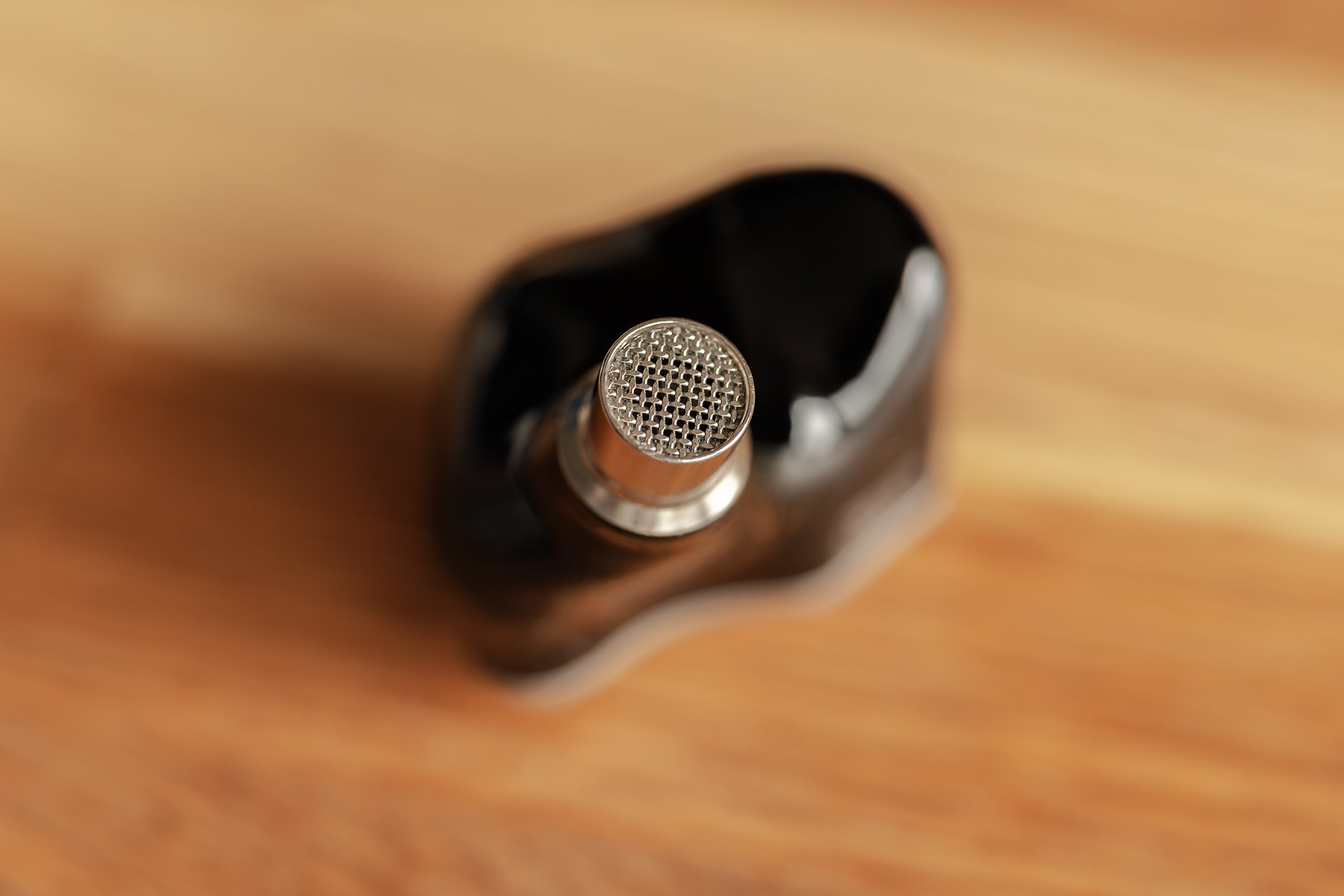
The eartips are… just eartips. Their sets are practically indistinguishable from each other, if not identical. There’s no difference in measurements between them.

These eartips are not the most advantageous for my ears, but, fortunately, any Zhulinniao Zhu Rythme, Whizzer ET100AB, DIVINUS Velvet or EPZ original eartips (by the way, why aren’t they included?) are just right for the average fit depth, for which these earphones are designed. And they hold on the sound ducts quite well.
I can’t really say anything about any nuances of use because there are none of them: P50 fit in comfortably.
The sound
Read the article about the rig here.
Frequency response of EPZ P50 when combining graphs at 500 Hz:
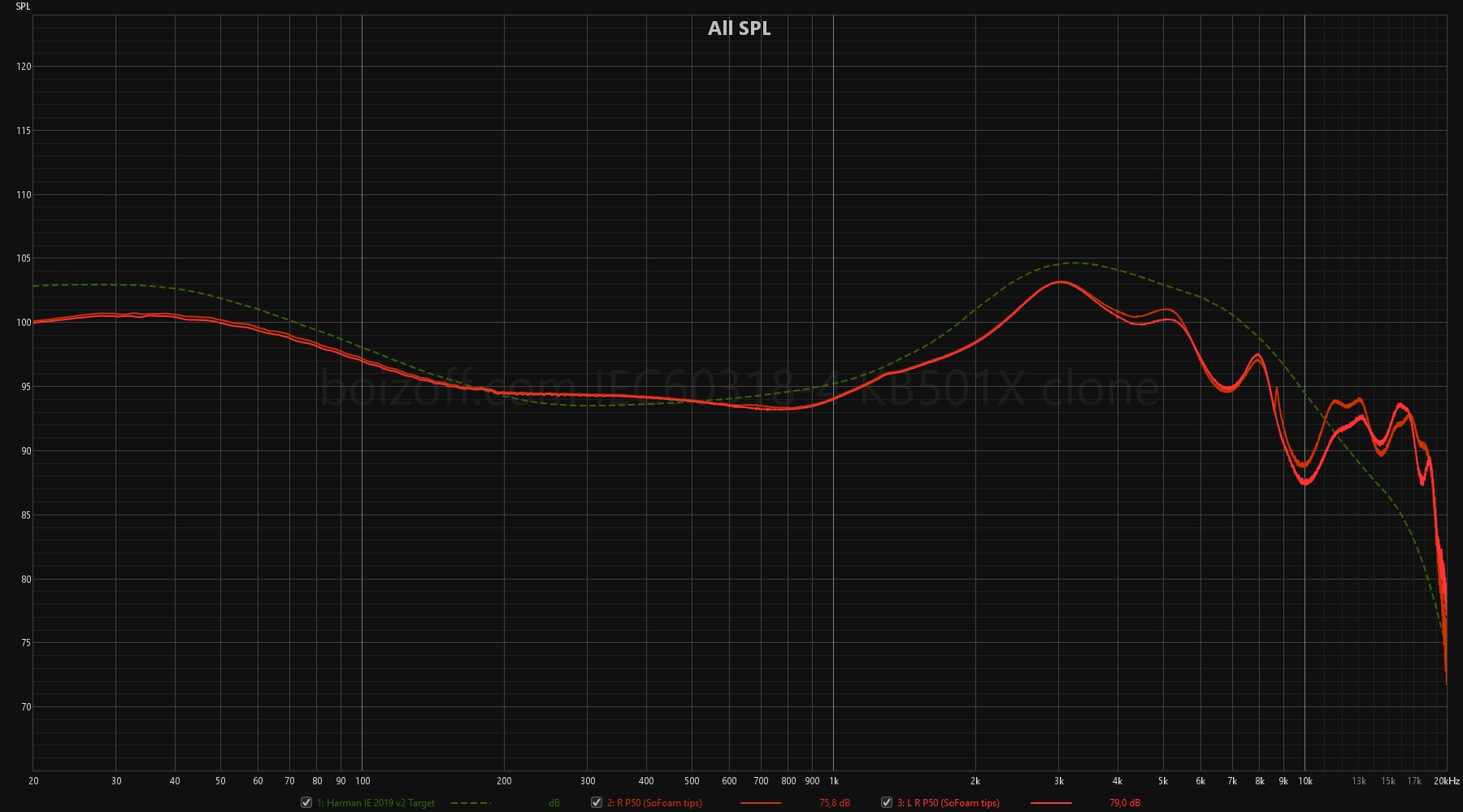
Here we can see an interesting attempt to create a variation of sound delivery based on meta tuning (see the section “What exactly do the column names in the table below mean?” in a known rating), but with an extended top. The difference between subbass and ‘ear gain’ (as we, left-wing audiophiliacs-measurers say, meaning the 2.8-3.3 kHz segment) is 2.5 dB, while meta tuning defines this difference as 0.8 dB. That is, the midrange in P50 is clearer and more distinct, plainly louder. And then we have that ‘tail’ from 10 kHz, which only goes down from 18 kHz.
To sum up, we have a generally ‘warm’ basis coming from meta tuning, but, at the same time, a highlighted middle and extended (in terms of volume) tops up to the audible limit. So, is this a neutral sound delivery?
Not really: to my ear, P50 sound more like this:
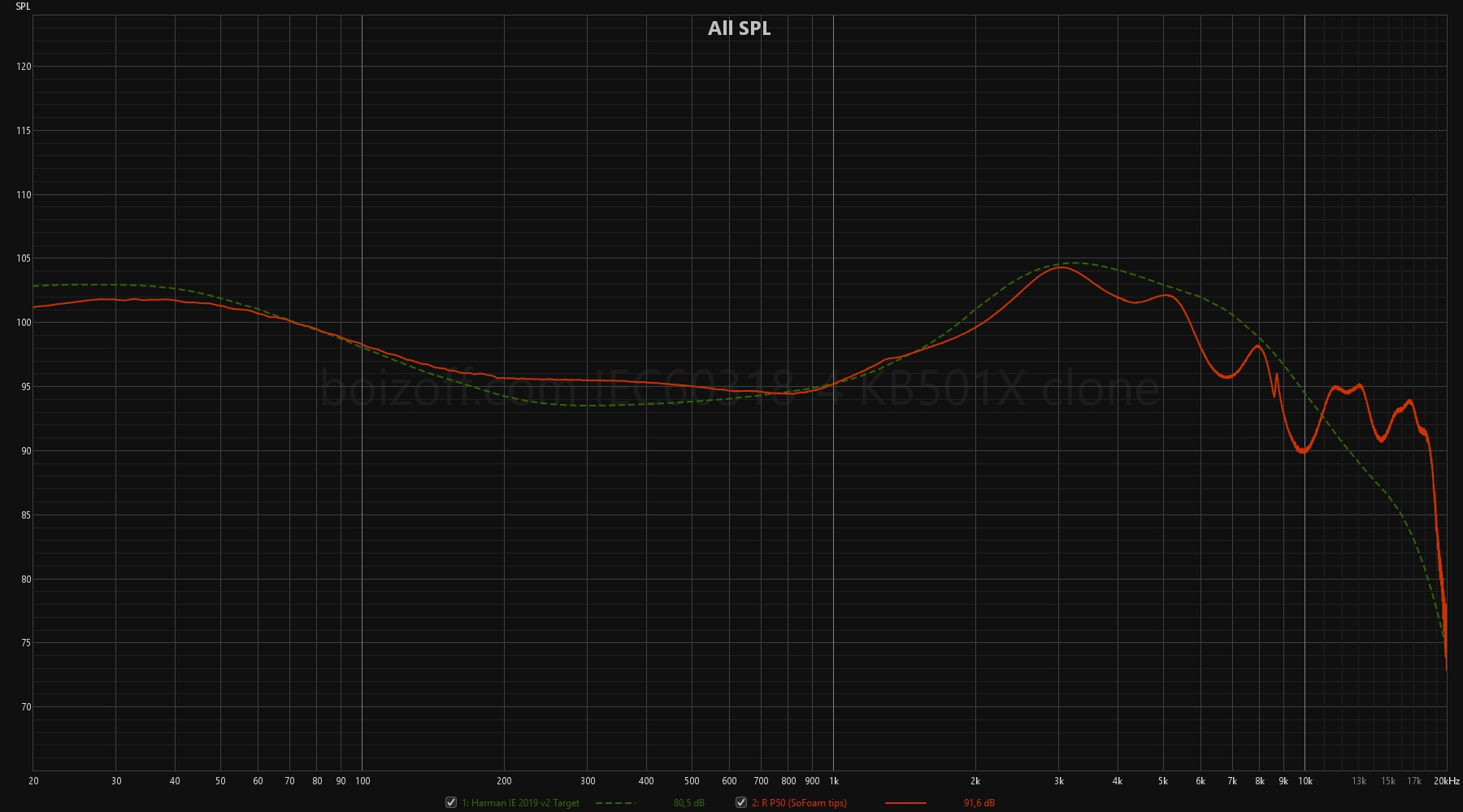
This is the same graph — I just combined it with the Harman curve at 1,000 Hz.
P50 sound lukewarm to neutral and have a really clear midrange complemented with extended, full-fledged tops. The peculiarity is that the bass plays very, very weightily, but only when it’s ‘invited to the music’, I’d say. P50 can hit your ears when needed, and by this their sound is not dry and balanced, but actually driving and assertive here and there. In short, it turned out to be an interesting sound delivery. It’s technical, balanced, wide, but at the same time somewhat daredevil and lilting.
But we’ll talk about whether it’s unique below.
Nonlinear distortion (with the ‘Use harmonic frequency as ref’ option off and on) at 94 dB:
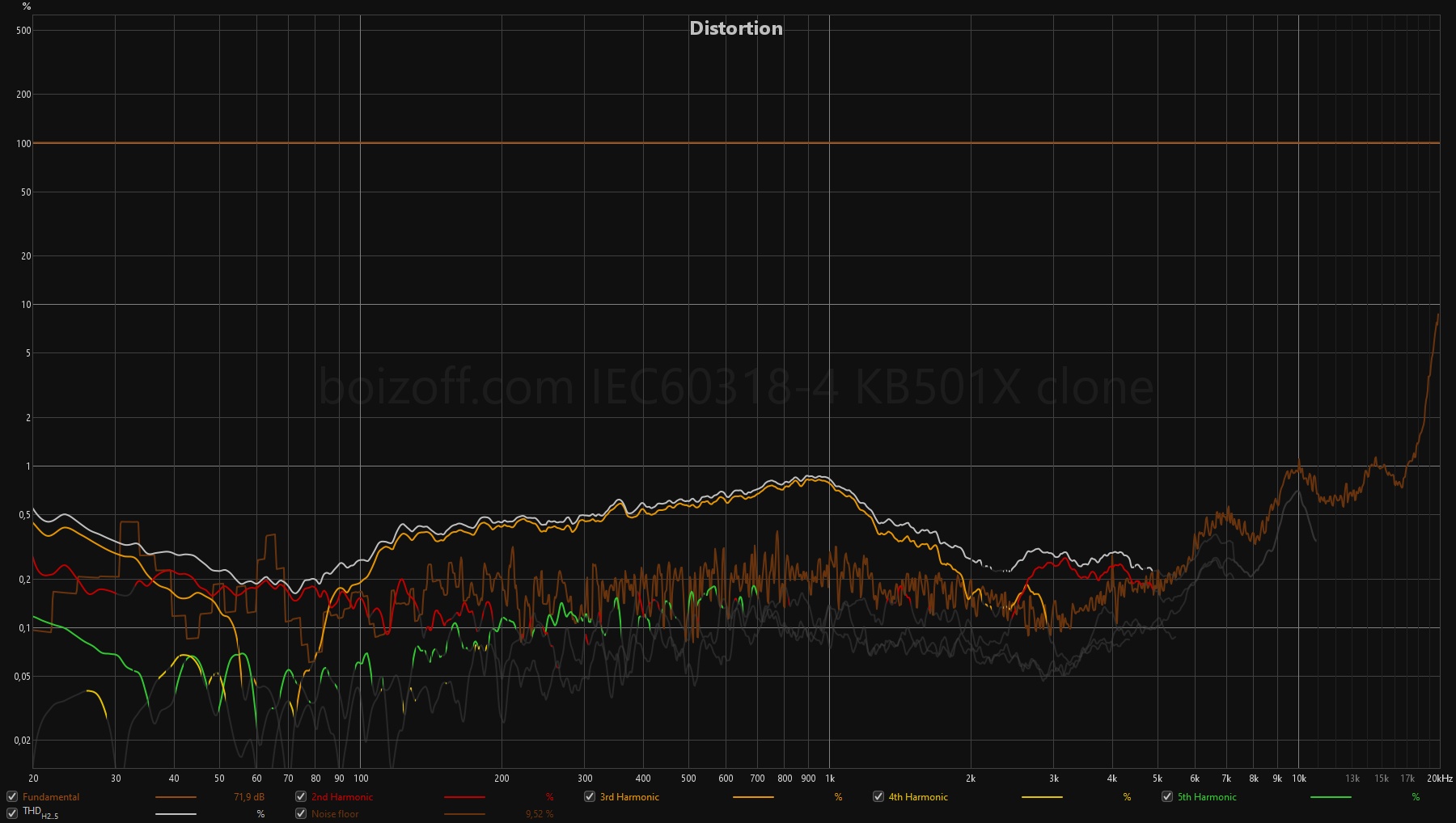
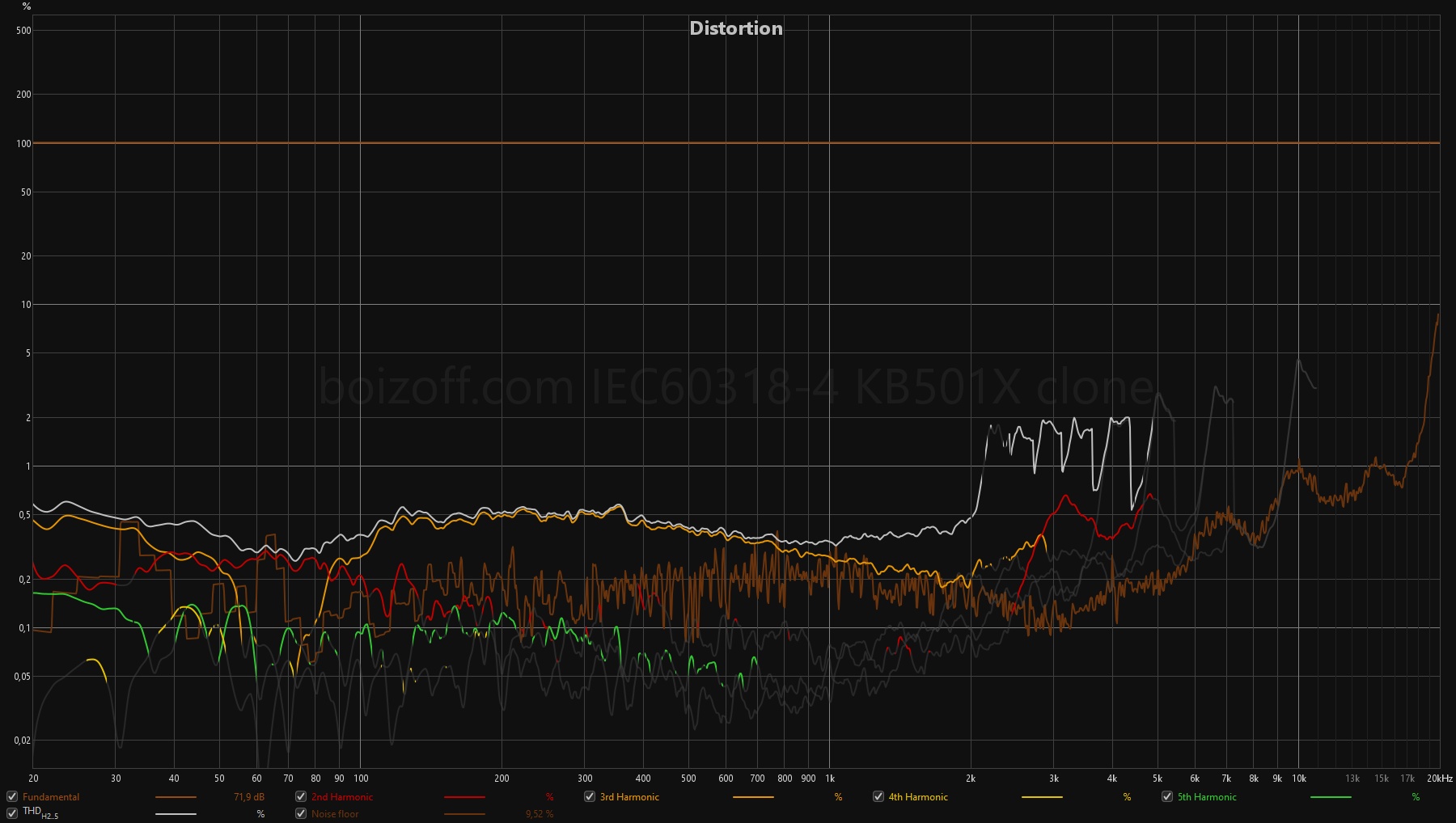
P50 phase response:
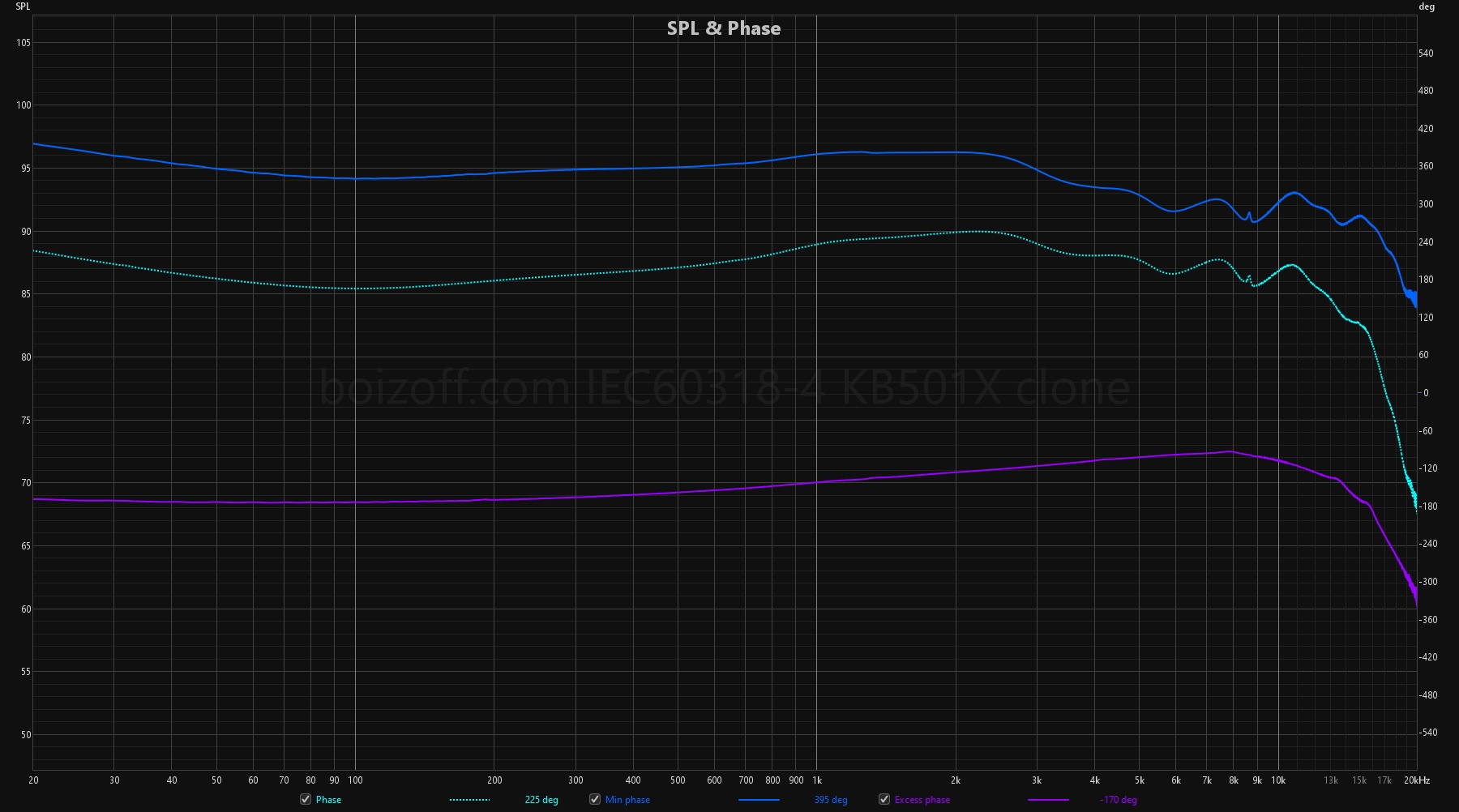
Group-delay:
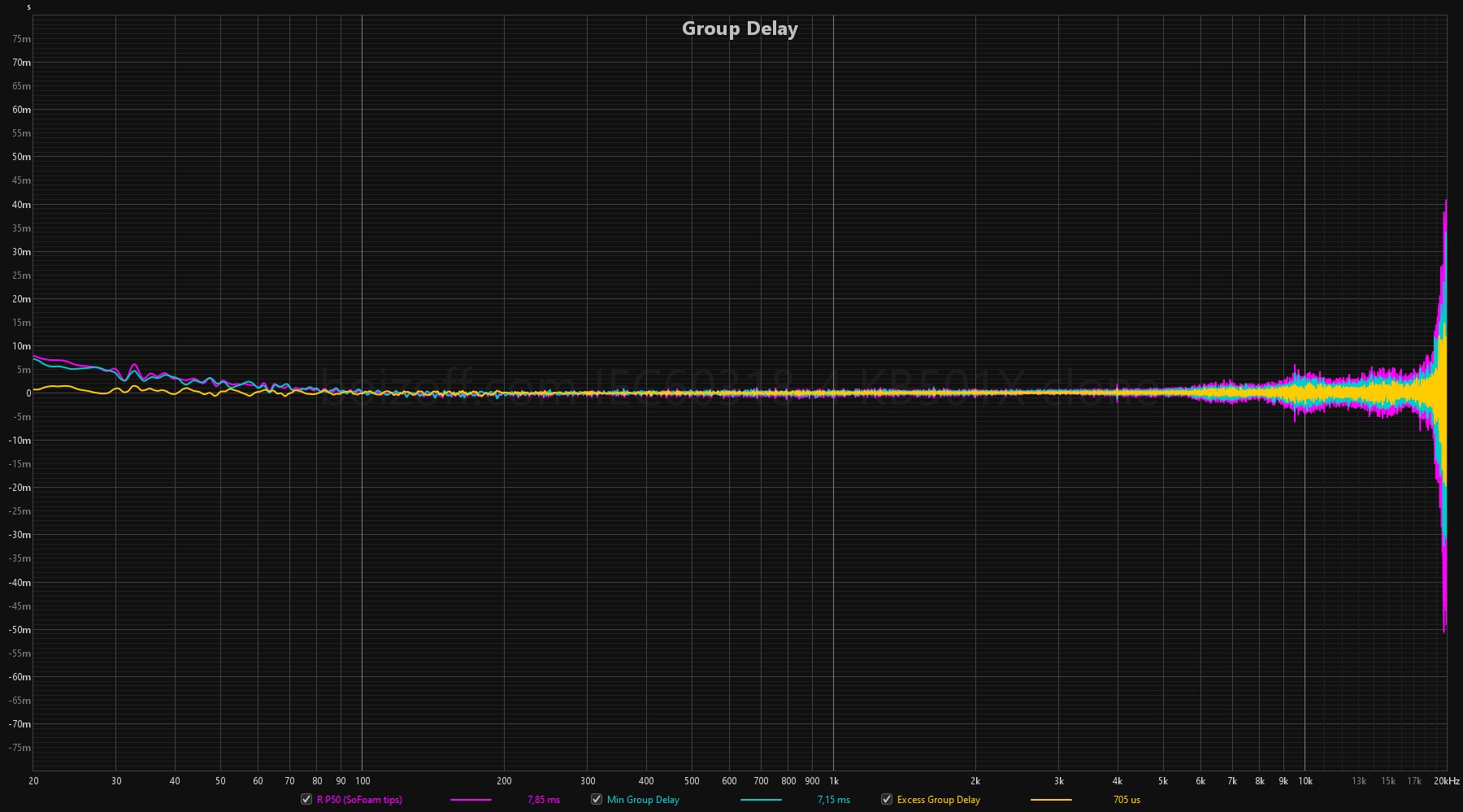
Spectrogram in the ‘Burst decay’ mode:
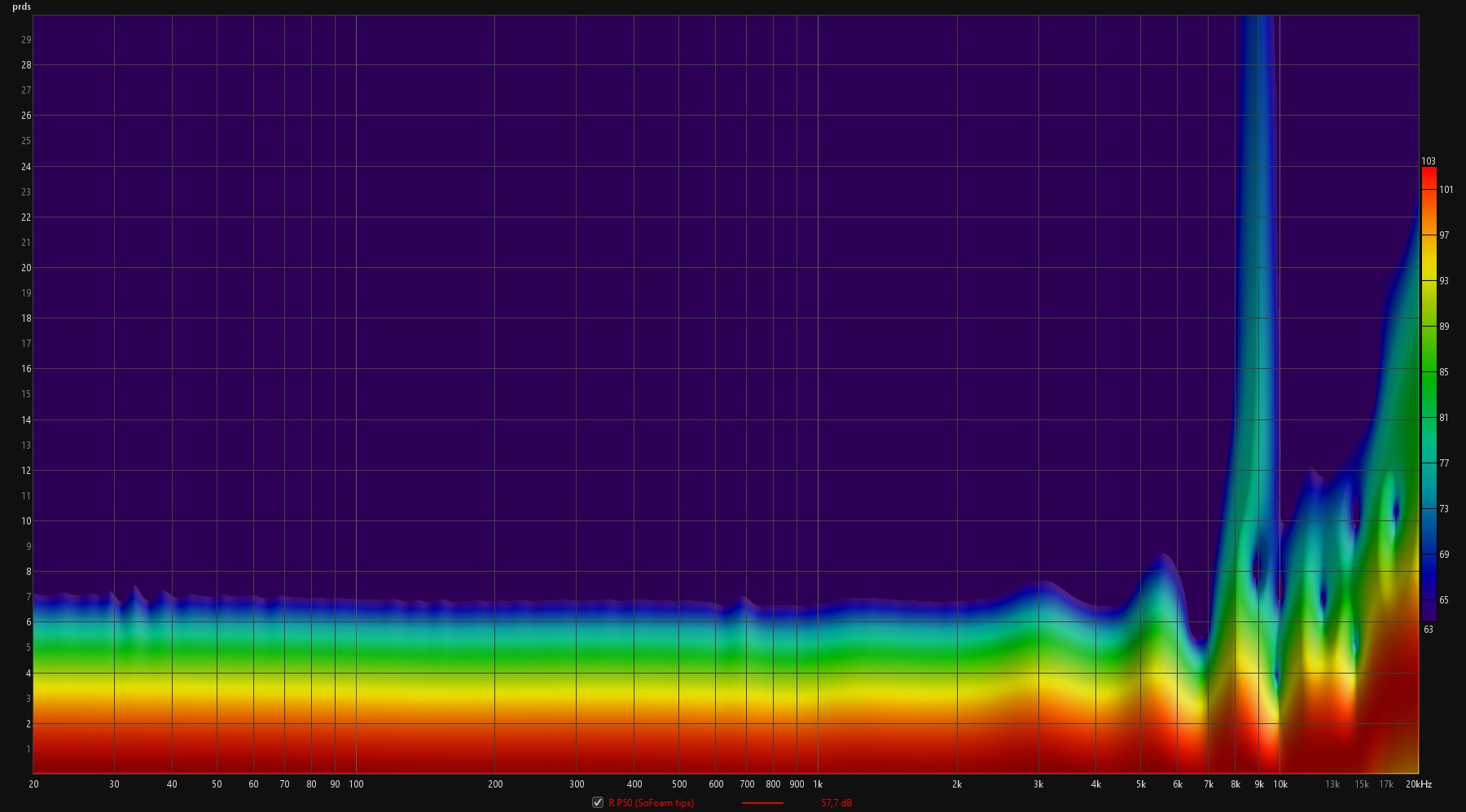
These were the measurements of the right earpiece. And here we see that near the frequency of 9 kHz, the sound fades out not in 7, but in more than 30 periods.
And here is this place on the frequency response graph:
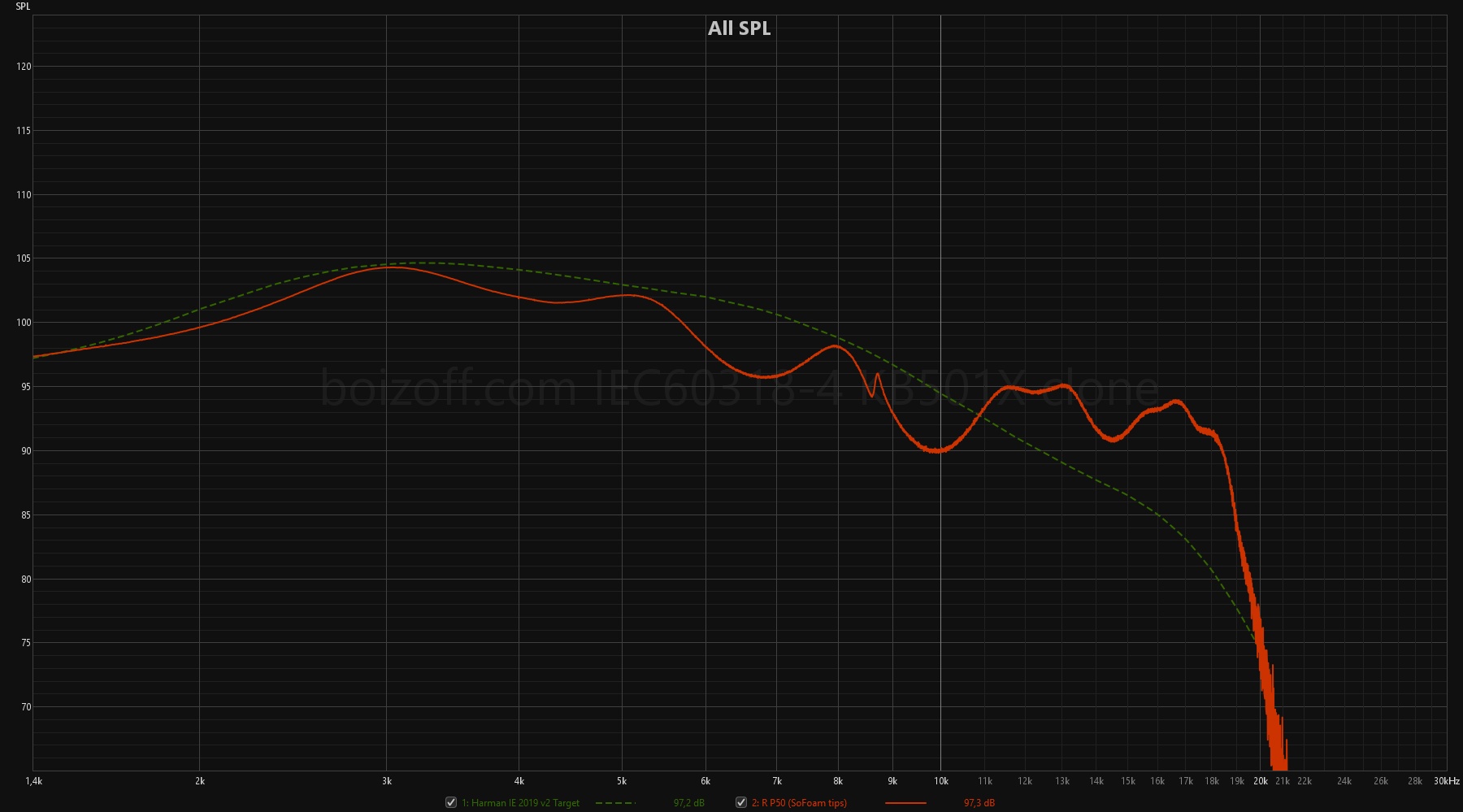
Spectrogram of the left earpiece in the ‘Burst decay’ mode:
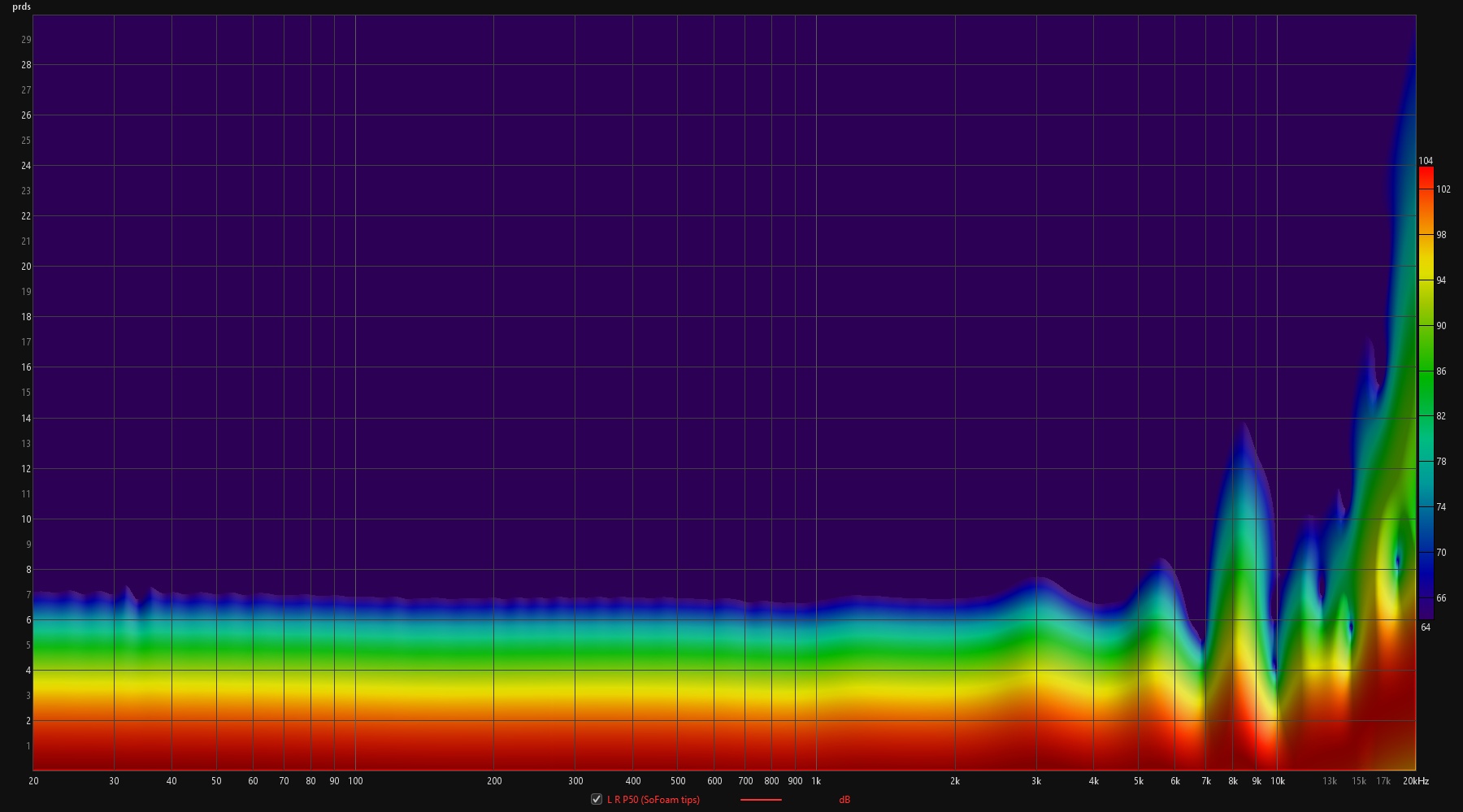
It means that I’ve got bad luck with this sample. But you might have it bad, too.
All in all, P50 don’t set any records from a technical point of view, but there’s frankly nothing to complain about.
Comparisons
We need to compare the item with the best ones in the same price category, so let’s open the ranking and compare. Let me remind you that I always have all the earphones from my ranking list in my hands (but ZiiGaat Estrella, as I haven’t purchased it for personal use yet, my fault), so I compare not by graphs, not off the top of my head, but immediately by ear, quickly re-putting different models into my ears.
As a starting point, look at GizAudio × Binary Acoustics CHOPIN (link to the review for those who missed it):
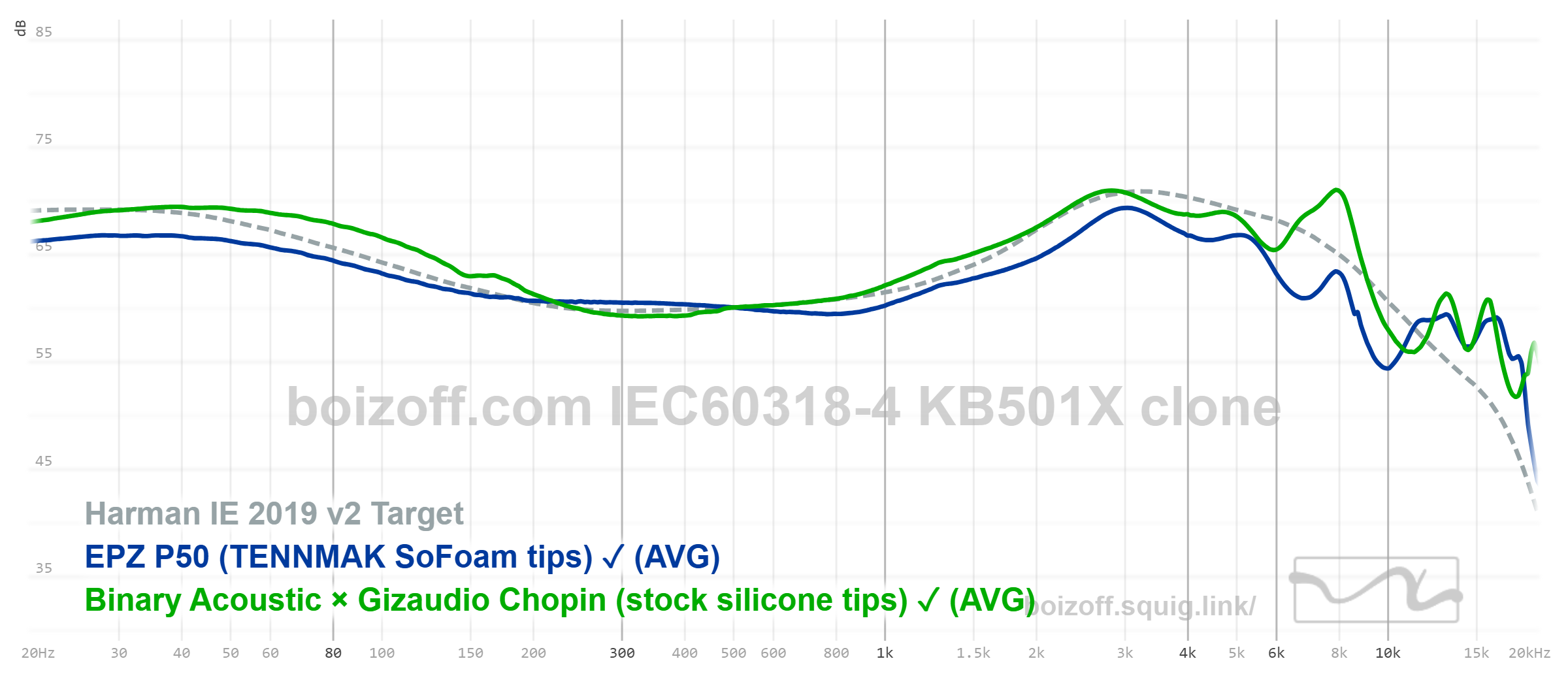
The Chopin’s sound is totally different at all. It’s about vigor, drive, groove and all that jazz.
As compared with Meyr Audio SLIIVO SL41 MK2:

SL41 MK2 rely on subbass in particular and on meta tuning in general. Their sound is ‘heavier’ and more sonorous. They’re much more about fun, more V-shaped.
My beloved TRI I3 MK3:
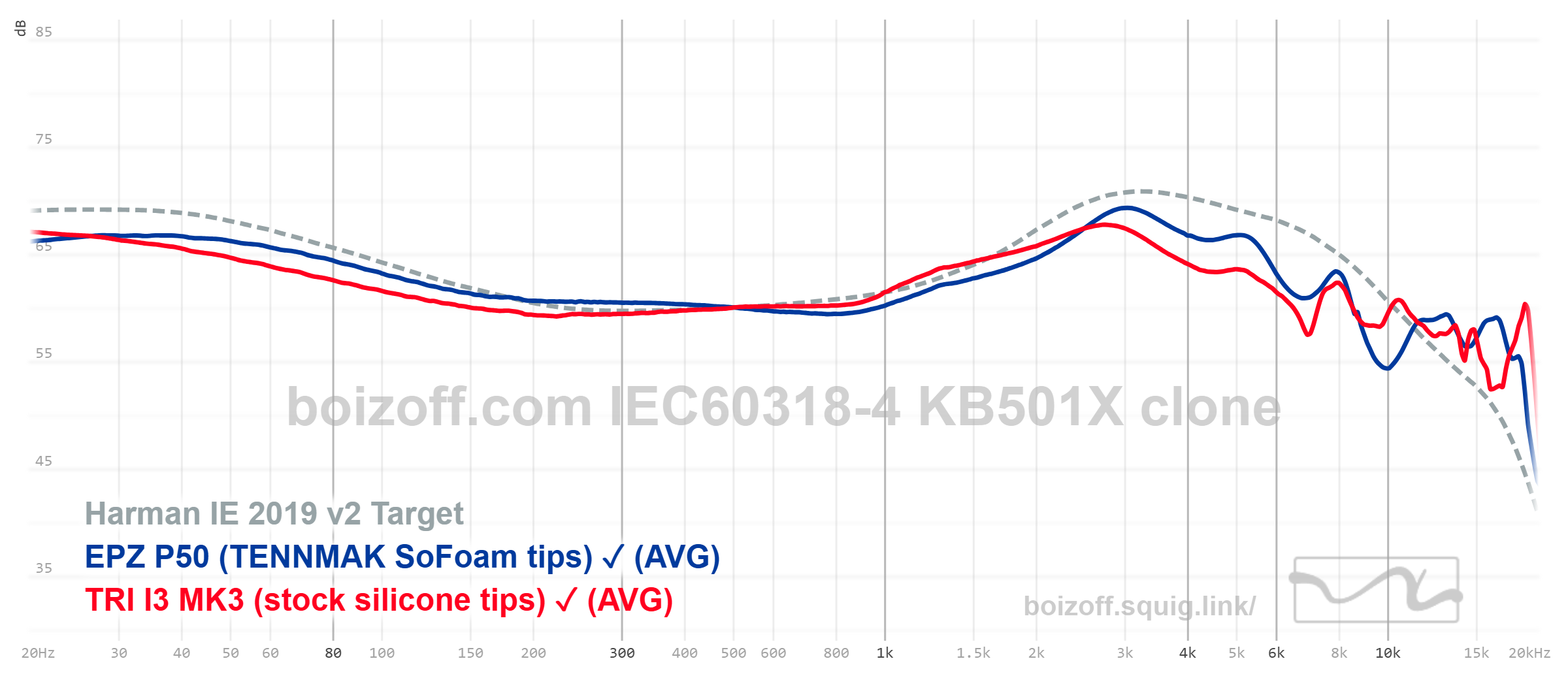
They’re already closer to a truly neutral (at least by ear) sound delivery. Besides, there is a light rise at about 1.5 kHz, which expands the virtual sound stage.
For last, here’s a comparison with Quarks 2, funny earphones with a microphone on a non-detachable cable for some $17.
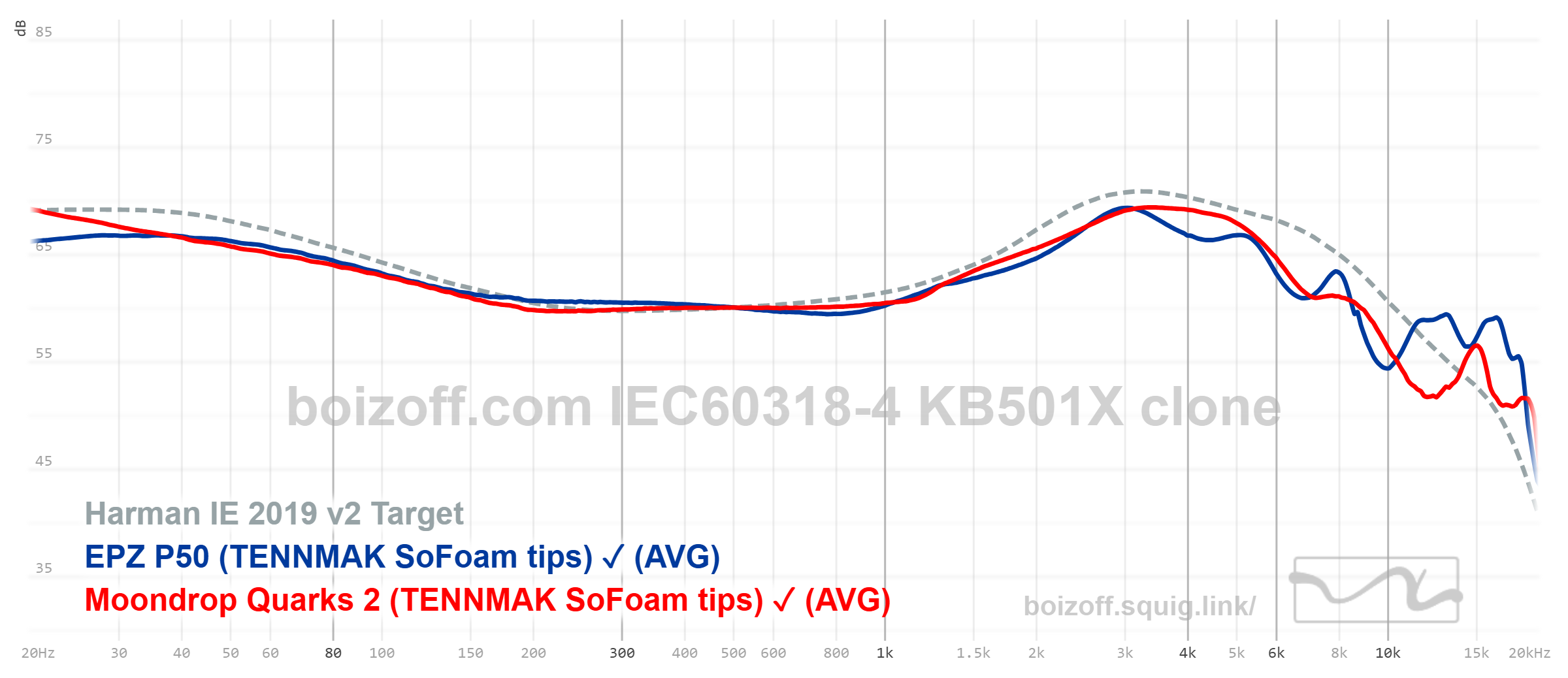
You see? The models were apparently tuned with the same intention, with the same target vision, but the middle and upper ranges of Quarks 2 are much ‘smoother’, and it’s only the ultra-high-frequency component that just corresponds to the target curve rather than being highlighted, and the bass is also pronounced a bit less.
May Quarks 2 be technically bad?
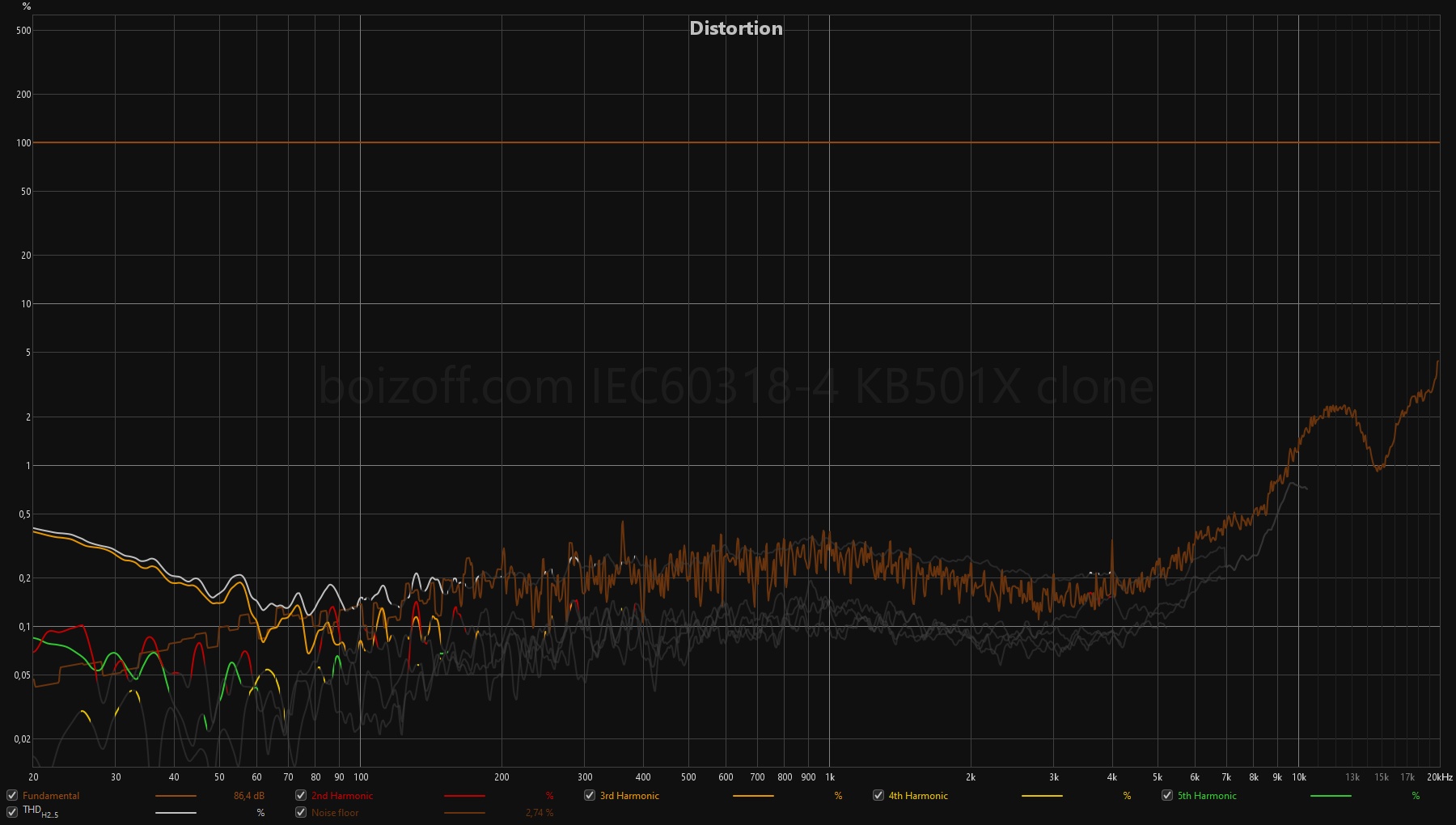
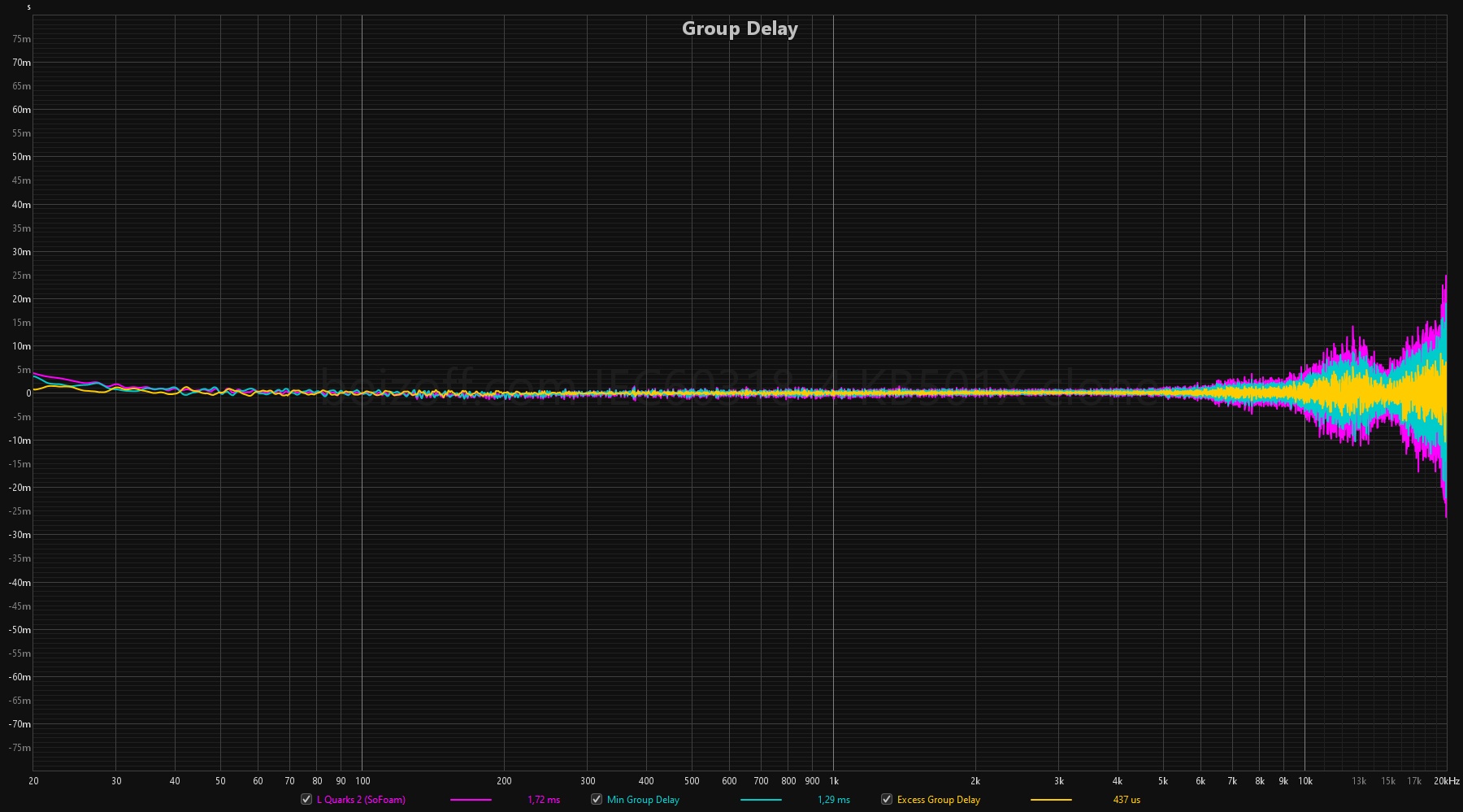
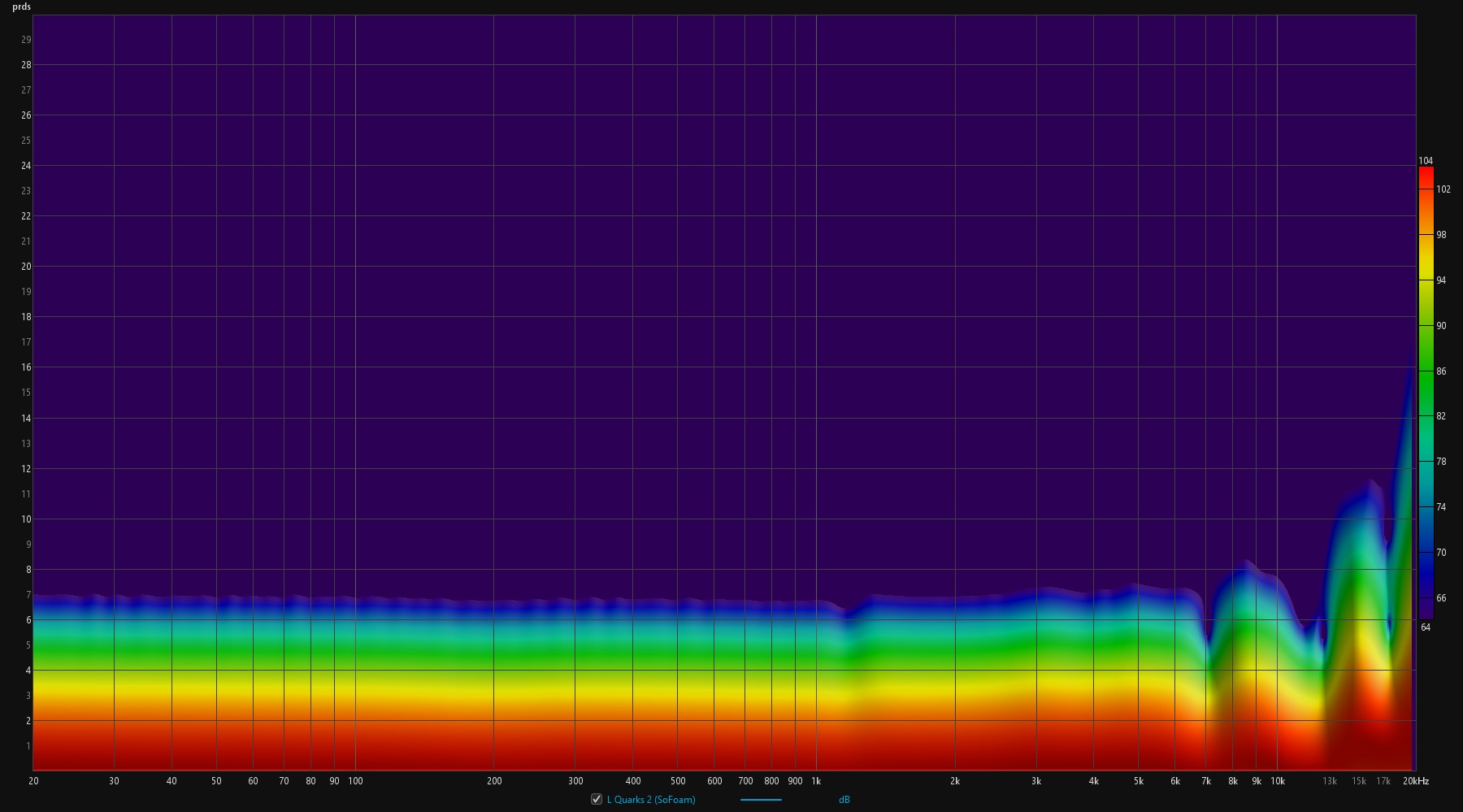
No, they’re technically better. Just better.
Summary
It’s good to be an independent reviewer! I don’t have to invent anything, to hide anything, to economize on truth or to slant anything in favor of the desired result. I would be happy to say that EPZ P50 are noteworthy if it weren’t for all the other earphones I mentioned above. I’d like to sincerely congratulate EPZ because P50 are good as they are, out of the current audio industry context. The problem is that the context — the price segment and the models in it — does exist, and there’s already no room to swing a cat there — you have to elbow your way into it.
In this context, P50 are mediocre, and this is the main reason not to buy them: if you want punch and drive, buy Chopin. If you want more neutrality, buy I3 MK3. If you want earphones with a subwoofer, buy SL41. Above all, if you want to pay by tenfold less, consider Quarks 2. P50 have been stuck somewhere between clear sound concepts of these models, while their own sound doesn’t pretend to be somewhat unique and valuable, unfortunately.
Although, I’ll say it again, if they cost half the price, it would be quite a different story.
Anyway, I’ll continue to follow the EPZ company. Who knows? They might manage to make something truly unique and remarkable within a couple of years. They’ve already managed G10.

